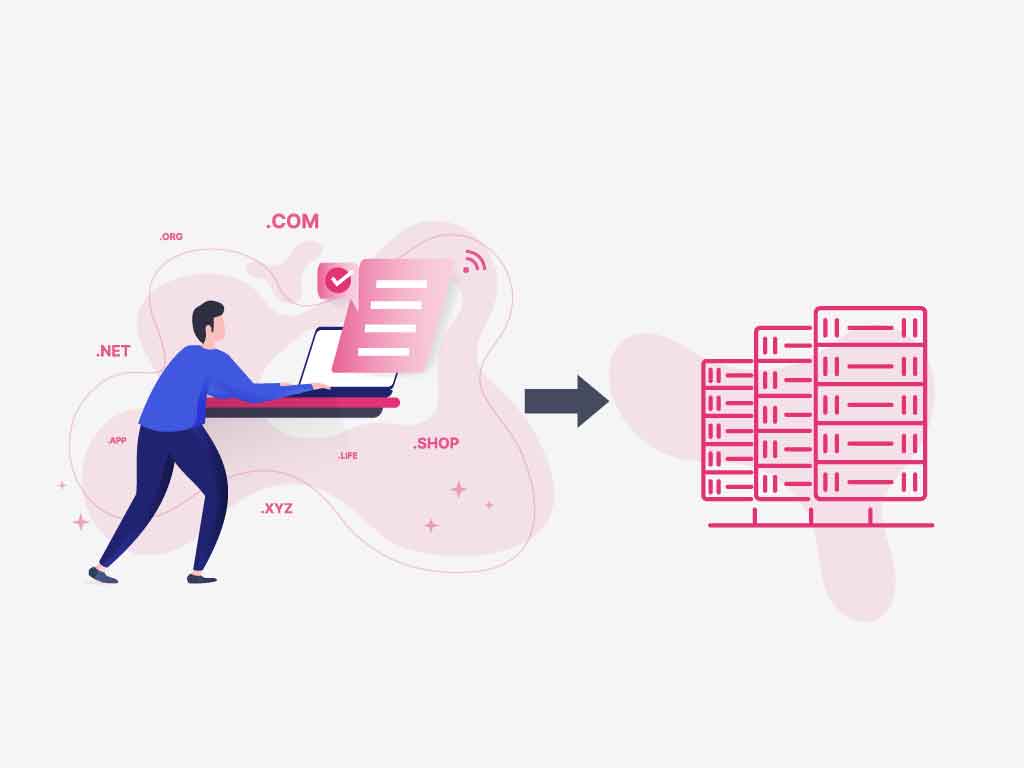Demystifying Multiple Domains on One Hosting Account: Everything You Need to Know

Are you a website owner who’s ever wondered how to manage multiple domains on one hosting account? Perhaps you’ve heard the term but weren’t quite sure what it entailed or if it was even possible. Well, fret no more!
In this comprehensive guide, we’ll demystify the concept of having multiple domains on a single hosting account and equip you with all the essential knowledge and tools needed to make it happen seamlessly. Whether you’re a beginner or seasoned webmaster, get ready to unlock the potential of your online presence as we delve into everything you need to know about juggling multiple domains effortlessly. Let’s dive in!
Table of Contents
Introduction
If you’re running a website, you may have come across the option to add multiple domains to your hosting account. But what does that mean, and how can it benefit your website?
In this article, we’ll demystify the concept of multiple domains on one hosting account and explain everything you need to know about it. By the end, you’ll be able to decide if adding multiple domains to your hosting account is the right move for your website.
We’ll start by discussing what multiple domains on one hosting account are, how they work, and the benefits of setting up this type of configuration. We’ll also cover potential downsides and look at some best practices to ensure your experience is successful.
Finally, we’ll explain the setup process and provide answers to some commonly asked questions about multiple domains on one hosting account. With this information in hand, you can make an informed decision about whether to add additional domains to your existing hosting setup.
What is Multiple Domains on a Hosting Account?
If you have a hosting account with multiple domains, you can host more than one website on your account. This is ideal for businesses with multiple brands, or for individuals who want to run multiple websites. With multiple domains on a hosting account, you can save money and simplify management by keeping all of your websites in one place.
When you add multiple domains to your hosting account, each domain will have its own folder within your account. You can access the files for each domain through FTP or cPanel, and each domain will have its own email addresses, databases, and settings. You can set up each domain independently, or you can redirect them to different pages on your website.
Adding multiple domains to your hosting account is a great way to expand your online presence. If you have more than one website, it’s easy to keep them all organized and running smoothly with a single hosting account.
Benefits of Using Multiple Domains on One Hosting Account
There are plenty of benefits to using multiple domains on one hosting account. For starters, it’s a cost-effective way to manage multiple websites. You can also take advantage of shared hosting resources, which can result in improved website performance.
Another benefit is that you can more easily manage DNS settings for all of your domains from one central location. This can be a big time-saver, especially if you have multiple domain names that resolve to the same IP address.
Using multiple domains on one hosting account can save you time and money. It’s also a great way to consolidate your web presence and make it easier to manage your DNS settings.
Finally, using multiple domains on one hosting account can help improve your SEO rankings. This is because search engine crawlers can detect when multiple domains on the same server all link to the same content. If they find this, it will count as a strong signal of quality content that will then be rewarded with higher rankings.
How to Set Up Multiple Domains on One Hosting Account?

Assuming you have already registered your domains, the process of set up multiple domains on one hosting account is actually quite simple. The first thing you need to do is log into your hosting account and find the area that says “Addon Domains.” This is usually located in the main control panel of your hosting account.
Click on the “Addon Domains” link and a new screen will appear. On this screen, you will need to fill in three pieces of information: the new domain name you want to add, the directory where you want to store its files, and finally, a password for that domain.
After you have filled in this information, click on the “Add Domain” button and your new domain will be ready to use!
One important thing to remember when setting up multiple domains on one hosting account is that each domain will have its own unique control panel. That means that if you want to make changes to one of your domains, you will need to log into that domain’s individual control panel – you cannot make changes to all of your domains from one central location.
But other than that, managing multiple domains on one hosting account is no different than managing a single domain – so don’t be afraid to add as many as you like!
Tips for Managing Multiple Domains
Assuming you already have a hosting account and domain name, managing multiple domains on one hosting account is actually quite simple. To get started, you’ll need to login to your hosting account via cPanel and navigate to the “Domains” section. From here, you can either add new domains or subdomains.
If you want to add a new domain, select the “Addon Domains” option. This will allow you to enter the new domain name, as well as choose the directory where its files will be stored. Once you’ve added the domain, it will appear in the list of domains under your hosting account. You can then proceed to setup email addresses, FTP accounts, and more for this domain.
If you want to add a subdomain, select the “Subdomains” option. Enter the subdomain name and choose the directory where its files will be stored. Once you’ve added the subdomain, it will appear in the list of domains under your hosting account. You can then proceed to setup email addresses, FTP accounts, and more for this subdomain.
And that’s really all there is to it! Managing multiple domains on one hosting account is easy once you know where to go in cPanel.
Tips:
- Make sure you keep track of each domain’s file and email setup for easier administration.
- Use a separate FTP account for each domain to ensure easy access and privacy.
- Regularly check up on each domain to ensure everything is running smoothly.
- Avoid overloading your account with too many domains – it’s important to stay within your hosting provider’s guidelines.
Possible Challenges with Having Multiple Domains on One Account
There are a few potential challenges that come with having multiple domains on one account.
- First, it can be more difficult to keep track of all the different domains and their corresponding files. This can lead to confusion and errors when trying to edit or update a website. Additionally, if one of the websites on the account experiences technical difficulties, it can impacting the other websites as well.
- Another challenge is that it can be more difficult to get customer support from the hosting company if there are multiple websites on the same account.
- Finally, trying to optimize multiple domains for SEO on the same hosting account can be difficult. It’s likely that some of the SEO advantages of having a separate hosting account for each domain would be lost. Additionally, it can be difficult to ensure that each domain is properly being crawled and indexed by search engines if they are all housed on the same account.
Recommended Best Practices
There are a few best practices to keep in mind when managing multiple domains on one hosting account:
- Keep your domain names and hosting account login information safe and secure. Be sure to choose a strong password for your hosting account and never sharing it with anyone.
- Make sure each domain has its own unique content. This will help search engines index your site correctly and avoid any duplicate content penalties.
- Use redirects wisely when moving or changing domains. Redirects tell search engines where to find your new content, so be sure to use them correctly to avoid any ranking issues.
- Stay organized! Keeping all of your domains and their associated files and settings sorted in one place will save you a lot of time and headaches down the road.
- Monitor your domains regularly for any security or performance issues. Keep an eye on your server logs, page loading times, and security settings to make sure everything is in order.
- Utilize a CDN for improved performance. A content delivery network can drastically improve the speed and reliability of your sites, especially if you’re getting high levels of traffic from all over the world.
- Ensure all domains use an SSL certificate. SSL certificates are essential for creating a secure connection between your server and the user’s browser, protecting sensitive data like credit card numbers from being intercepted by hackers.
By following these best practices, you can make sure your multiple domains are as secure and efficient as they can be.
Conclusion
It can be confusing to understand how multiple domains work when it comes to hosting accounts and website setup, but thankfully this article has demystified the process for you. Now that you have a better understanding of how multiple domain names on one hosting account works, you should feel more confident in setting up your own websites while taking advantage of all the benefits that come with it. With strong security in place and easy website management, this is an ideal way to host multiple sites at once without sacrificing performance or costing yourself too much money.






